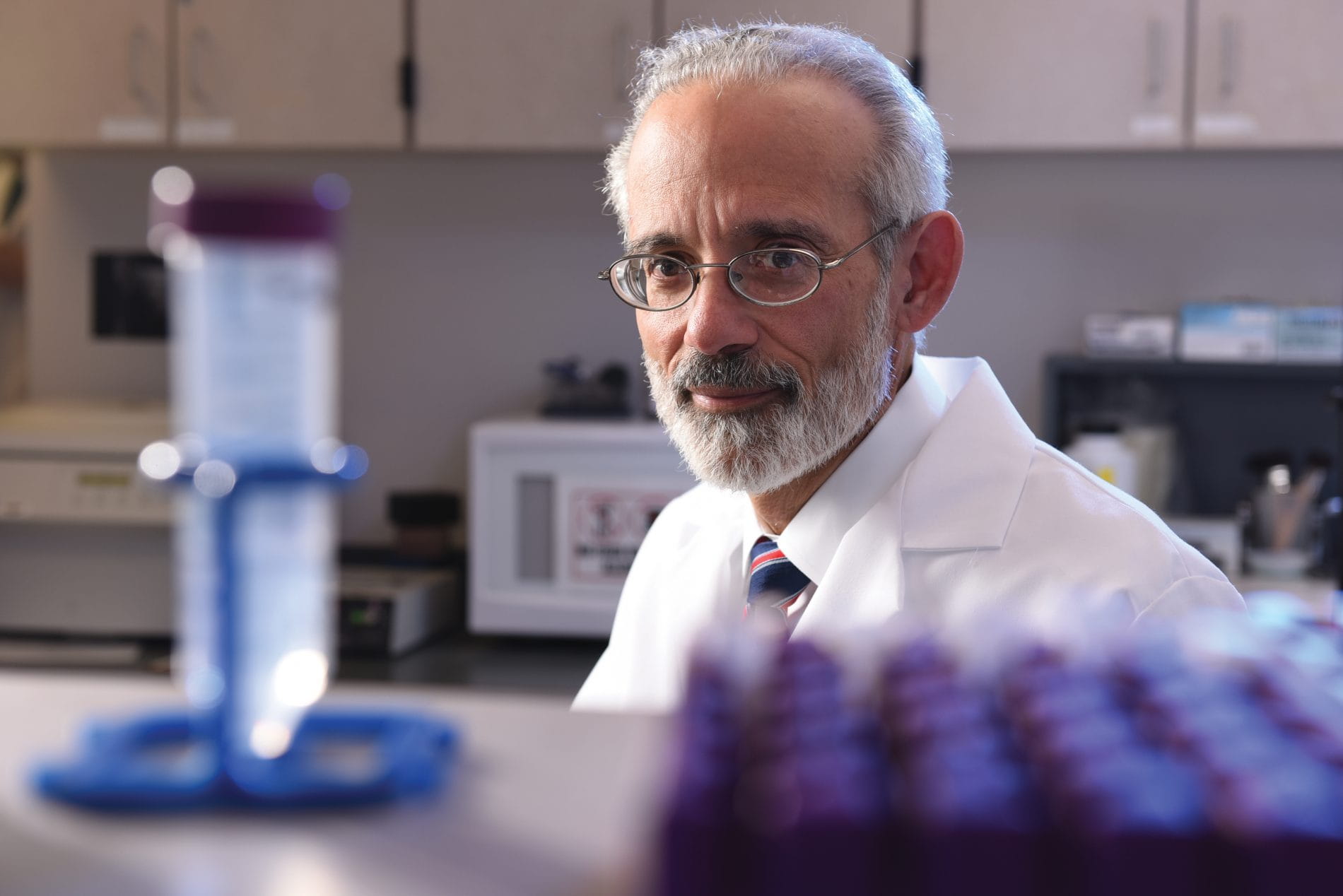FDA Signs Off on New XLH Drug

Michael Econs, MD, chief of the Division of Endocrinology, led research pivotal in the development of a drug to treat XLH.
Karen Spataro Jul 01, 2018
COLTON MOORE was just 16 months old when he was diagnosed with X-linked hypophosphatemia, or XLH, an uncommon, painful and deforming bone disease. His mother was devastated. She had good reason to be. Debbie Moore was also diagnosed with XLH as a toddler. She spent much of her childhood wearing leg braces and underwent several surgeries in an effort to straighten her legs. By the time she graduated from high school, she needed a walker. Today, she relies on a wheelchair to get around.
But Colton, now 12, is destined for a much different future thanks to research led by IU School of Medicine faculty members.
In April 2018, the U.S. Food and Drug Administration approved a new drug to treat XLH that is based on research by Michael Econs, MD, and Kenneth E. White, PhD.
“I have been caring for individuals with XLH for my entire career, and I have seen how painful and debilitating it can be,” said Econs, chief of the Division of Endocrinology and the Glenn W. Irwin, Jr. Professor of Endocrinology and Metabolism. “To see our research lead to a new drug for XLH is a dream come true. This therapy will help alleviate suffering and enable patients to live fuller, more active lives.”
XLH is typically inherited and affects more than 12,000 patients in the United States and one out of every 20,000 people worldwide. Patients are usually diagnosed as children and have bowed legs, short stature, and experience bone pain and dental abscesses.
Econs began treating patients with XLH in 1986 as a fellow at Duke University and soon launched a 30- year quest to develop new therapies for patients. In 1995, he was part of a team that discovered that a mutation in the PHEX gene causes XLH. Econs and White later played a role in determining that the “genetic typos” in PHEX somehow signaled the body to make too much of the FGF23 hormone.
High levels of FGF23 cause the body to excrete excessive amounts of phosphate in the urine. Phosphate is a mineral critical for proper bone formation in children and bone strength in adults. Without enough blood phosphate, patients develop rickets and other debilitating symptoms of XLH.
The Indiana University Innovation and Commercialization Office licensed their patents based on the discovery to Tokyo-based Kyowa Hakko Kirin. Kyowa Hakko Kirin produced the new drug, called burosumab, and subsequently entered into a collaboration and license agreement with Ultragenyx Pharmaceutical of Novato, California, to collaborate in its development and commercialization.
Clinical trials were led in part by Erik A. Imel, MD, an associate professor of medicine and pediatrics at IU School of Medicine, Munro Peacock, MD, DSC, a professor of medicine at IU, and Thomas Carpenter, MD, of the Yale School of Medicine. The studies demonstrated that burosumab normalizes blood phosphate, thereby improving rickets and lower-limb deformity of the legs in children, and bone healing, fracture resolution, and osteomalacia in adults.
The drug received approval from the European Medicines Agency in February for use in children and adolescents with XLH. The FDA approved usage on April 17, 2018. It is the first treatment that targets the underlying cause of the disease.
Colton has been on burosumab for four years as part of the clinical trials.
His mother says the improvements have been nothing short of extraordinary.
“When Colton began this trial, his toes and feet were so turned in, he would literally trip over his own toes,” she said. “Now, he loves running around outside with his friends and roller skating. He has even performed as part of the Peru Amateur Circus for a few years.”
“Just knowing that Colton and children like Colton won’t have to go through the pain, and that they can do whatever they want to do—become whatever they want to become—is just an amazing thing,” she added.
Econs and White’s research on XLH and other related diseases has been funded by multiple grants from the National Institute of Arthritis and Musculoskeletal and Skin Diseases and the National Institute of Diabetes and Digestive and Kidney Diseases, parts of the National Institutes of Health.
Econs also received continuous philanthropic support from the Scottish Rite of Indianapolis Foundation since joining the IU School of Medicine faculty in 1997. Without that funding, the work would have stalled long ago, he said.
In addition to funders, White also credited the many patients who participated in their research.
“Through the years, we have been trusted and aided by selfless patients who shared our commitment to finding answers,” White said. “They hosted family reunions so we could collect blood samples to study and shared personal information about their health and families.
“They signed up for clinical trials with no promise that they would benefit. They are a vital part of this story. Without them, this therapy would not exist.”
Developing groundbreaking treatments takes time and resources. To support this kind of research, contact Kathryn Red at kred@iu.edu or 317.274.3685.